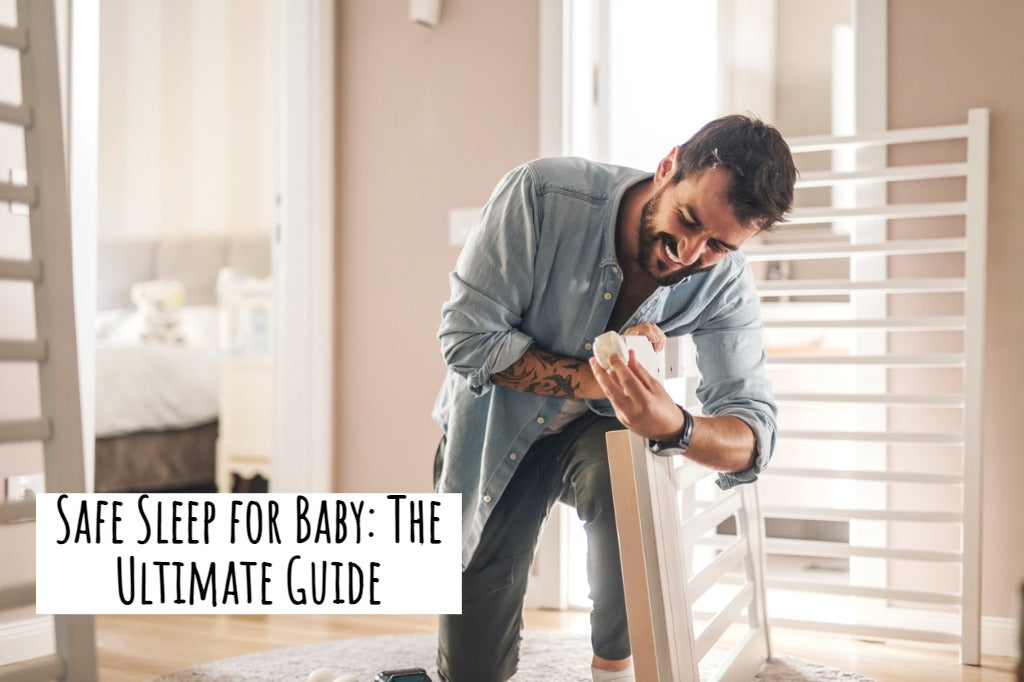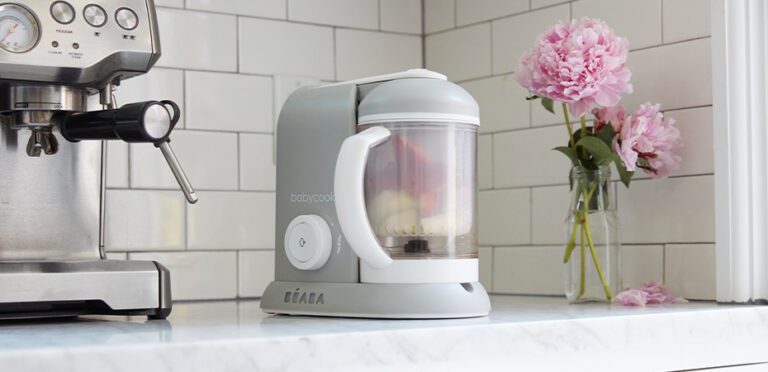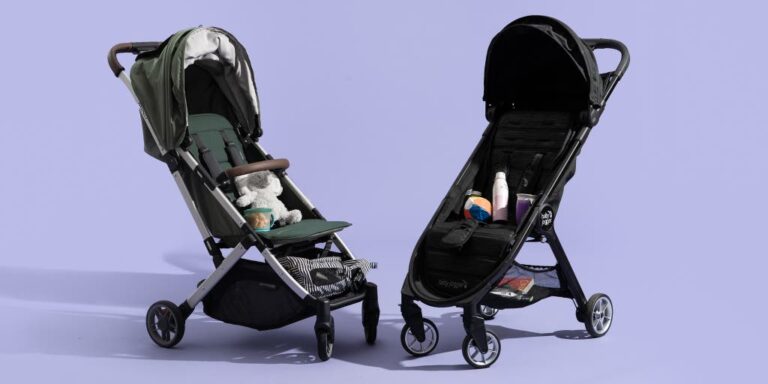How Long Can a Baby Sleep in a Crib: A Comprehensive Guide
A baby can sleep in a crib for up to two years. Cribs provide a safe and comfortable sleeping environment for infants, and it is recommended to transition them out of a crib once they reach around two years of age.
While some babies may transition to a toddler bed at an earlier age, the general guideline is to keep them in a crib until around two years old. This allows them to develop the necessary physical and cognitive skills to safely sleep in a bed.
Additionally, cribs provide a secure space for babies to sleep throughout the night, reducing the risk of accidents and promoting healthy sleep habits. Overall, using a crib for up to two years is a common and recommended practice for ensuring a baby’s safety and comfort during sleep.
Understanding The Importance Of A Crib For Baby Sleep
Understanding the importance of a crib for baby sleep is crucial, especially when considering how long a baby can sleep in a crib. While there is no specific time limit, many children sleep in a crib for up to two years, providing a safe and comfortable sleeping environment for optimal rest and development.
Benefits Of A Crib For Baby Sleep
Using a crib for your baby’s sleep provides numerous benefits that contribute to their overall well-being and development. Here’s a closer look at why a crib is an essential item for creating a safe and comfortable sleep environment for your little one. 1. Safe and Secure: A crib acts as a secure space for your baby to sleep, preventing them from rolling out or getting trapped between the bed and the wall. It provides a designated area solely dedicated to their sleep, ensuring their safety throughout the night. 2. Comfort: Cribs are designed to provide optimal comfort for babies. They come with a firm mattress that supports proper spinal alignment and reduces the risk of Sudden Infant Death Syndrome (SIDS). The use of a crib gives your baby a cozy and comfortable sleep surface, promoting better sleep quality. 3. Boundary Formation: By using a crib, you establish a physical boundary for your baby, aiding in their cognitive and emotional development. The consistent sleeping space creates a sense of familiarity and routine, helping them feel secure and calm when it’s time to sleep.Safe Sleep Practices In A Crib
Ensuring safe sleep practices in the crib is crucial for your baby’s well-being. By following these guidelines, you can create a safe sleep environment that promotes healthy sleep habits. 1. Back to Sleep: Always place your baby on their back to sleep, as recommended by the American Academy of Pediatrics (AAP). This position reduces the risk of SIDS and allows for the proper development of their neck and spine. 2. Firm Mattress: Use a firm mattress that fits snugly within the crib. Avoid using soft bedding, pillows, blankets, or stuffed animals, as they can pose suffocation hazards. Instead, dress your baby in a sleep sack or wearable blanket to keep them warm without the risk of overheating. 3. Proper Crib Positioning: Position the crib away from windows, cords, and other potential hazards. Ensure that the crib slats are no more than 2-3/8 inches apart to prevent your baby from getting their head stuck or trapped. 4. Room Sharing: The AAP recommends room sharing but not bed sharing, especially during the first six months. Place the crib in your bedroom for easy monitoring and to facilitate nighttime feedings, while still maintaining a separate sleep space for your baby.Promoting Healthy Sleep Habits With A Crib
Using a crib can help establish healthy sleep habits for your baby, contributing to their overall development and well-being. Here are some ways to promote healthy sleep habits with a crib. 1. Consistent Bedtime Routine: Establish a consistent bedtime routine that signals to your baby that it’s time to sleep. This may include activities like a warm bath, soothing lullabies, and dimming the lights. By following the same routine each night, you create a cue that helps your baby transition into sleep mode. 2. Daytime Naps: Encourage regular daytime naps in the crib to support healthy sleep patterns. Provide a peaceful and distraction-free environment by dimming the lights and minimizing noise. Consistent nap times help regulate your baby’s sleep-wake cycle, promoting better nighttime sleep as well. 3. Gradual Transition: When your baby reaches the appropriate age or developmental milestones, such as when they start climbing or their chest is level with the crib railing, you can consider transitioning them to a toddler bed. This allows for a smooth and gradual transition while still providing a safe sleep environment. Remember, a crib plays a vital role in ensuring your baby’s safety and promoting healthy sleep habits. By following safe sleep practices and incorporating a consistent bedtime routine, you can cultivate a positive sleep environment for your little one. Sources: – American Academy of Pediatrics (AAP) – Sleep Foundation – NanitAge Recommendations For Baby Sleep In A Crib
Babies can sleep in a crib until they are around two years old. It is recommended to transition a child out of a crib and into a toddler bed once the crib railing is lower than their chest, according to the American Academy of Pediatrics.
Newborns And Cribs: How Long Can Newborns Sleep In A Crib?
When it comes to newborns and cribs, it’s important to prioritize their safety and comfort. The American Academy of Pediatrics recommends that infants sleep in the same room as their parents for the first six months to reduce the risk of Sudden Infant Death Syndrome (SIDS). However, when it comes to sleeping in a crib specifically, there’s no set limit on how long a newborn can sleep in one. Many parents choose to have their newborns sleep in a crib from day one, while others may opt for a bassinet or co-sleeper. Ultimately, the choice depends on what works best for you and your baby.
Infants And Cribs: Ideal Crib Usage For Infants
As your baby grows out of the newborn stage and into infancy, you may be wondering how long they can continue sleeping in a crib. The general recommendation is for infants to sleep in a crib until they are about two years old. This provides them with a safe and comfortable sleep space that meets their developmental needs. However, it’s important to note that every child is different, and some may be ready to transition to a toddler bed earlier or later than others. Keep an eye out for signs that your infant is ready for a bed, such as climbing out of the crib or expressing discomfort.
Toddlers And Cribs: When Should Toddlers Stop Sleeping In A Crib?
Once your child reaches toddlerhood, you may start wondering when it’s time to say goodbye to the crib. The American Academy of Pediatrics recommends transitioning your child out of a crib and into a toddler bed once the crib railing is lower than their chest. This typically occurs between the ages of two and three. However, every child develops at their own pace, so it’s important to gauge your toddler’s readiness for a bed based on their individual cues and abilities. Some toddlers may be ready to make the switch earlier, while others may need more time in the crib. Trust your instincts and make the transition when you feel it’s right for your little one.
Creating A Safe And Comfortable Sleeping Environment In A Crib
When it comes to ensuring your baby gets a good night’s sleep, creating a safe and comfortable sleeping environment in a crib is crucial. The crib should be a peaceful and secure space where your little one can rest and rejuvenate. In this article, we will discuss some essential factors to consider when setting up your baby’s crib, including choosing the right crib mattress, recommended bedding and crib accessories for safety, and tips for creating a conducive sleep environment.
Choosing The Right Crib Mattress For Your Baby
The crib mattress plays a vital role in providing a comfortable and supportive surface for your baby to sleep on. Here are some important features to consider when selecting a crib mattress:
- Firmness: Opt for a firm mattress to reduce the risk of suffocation and promote healthy spinal development.
- Waterproof: Look for a waterproof mattress to protect against accidents and keep the mattress clean and hygienic.
- Hypoallergenic: If your baby has allergies or sensitivities, consider a hypoallergenic mattress to minimize potential irritants.
- Standard size: Ensure the mattress fits snugly in the crib without any gaps that could pose a safety hazard.
Recommended Bedding And Crib Accessories For Safety
Creating a safe sleep environment for your baby also involves selecting the right bedding and crib accessories. Here are some recommendations to prioritize your baby’s safety:
- Fitted crib sheet: Use a fitted sheet specifically designed for cribs, which should be tight-fitting to prevent any entanglement risks.
- Avoid soft bedding: Remove pillows, blankets, stuffed animals, and other soft objects from the crib to reduce the risk of suffocation or Sudden Infant Death Syndrome (SIDS).
- One-piece sleepers: Dress your baby in a comfortable one-piece sleeper instead of using loose blankets to maintain an appropriate sleeping temperature.
- Crib bumper alternatives: Instead of using traditional crib bumpers, consider using mesh liners or nothing at all to prevent possible suffocation hazards.
Tips For Setting Up A Conducive Sleep Environment In A Crib
Creating a conducive sleep environment is essential for your baby’s sleep quality and duration. Here are some tips to help you set up an optimal sleep environment in the crib:
- No distractions: Keep the crib free from any distracting toys or mobiles that may interfere with your baby’s sleep.
- Proper room temperature: Maintain a comfortable room temperature between 68-72 degrees Fahrenheit (20-22 degrees Celsius) to promote better sleep.
- Darkness: Use blackout curtains or shades to block out excess light and promote a restful sleep environment.
- Noisy environment: Minimize any loud or disruptive noises in the room, using white noise machines or soothing sounds to create a calm atmosphere.
By following these recommended practices, you can help create a safe and comfortable sleeping environment in your baby’s crib, ultimately promoting better sleep and overall well-being. Remember, prioritizing your baby’s safety and comfort is key when it comes to their sleep environment.
Transitioning From A Crib To A Toddler Bed
Transitioning from a crib to a toddler bed is a significant milestone for your baby’s sleep routine. It is recommended by the American Academy of Pediatrics to make the switch once the crib railing is lower than their chest.
Signs That Your Child Is Ready To Transition From A Crib
As your child grows, you may start noticing signs that they are ready to make the transition from a crib to a toddler bed. Some common signs include:
- Attempting to climb out of the crib
- Showing interest in a bigger bed
- Consistently waking up during the night
- Expressing discomfort or resistance when placed in the crib
How To Make The Transition Smoother For Your Child
Transitioning from a crib to a toddler bed can be a big change for your child. To make the process smoother, consider the following tips:
- Introduce the new bed gradually: Start by placing the toddler bed in the same room as the crib and allow your child to explore and get comfortable with it.
- Involve your child in the process: Let your child pick out their new bedding or decorate their new bed to create a sense of ownership and excitement.
- Maintain a familiar bedtime routine: Stick to the same bedtime routine to provide a sense of comfort and consistency during the transition.
- Offer reassurance and support: Be patient and understanding if your child has difficulty adjusting to the new bed. Offer comfort and reassurance during this period of change.
Ensuring Safety During The Transition Process
Safety is paramount when transitioning your child from a crib to a toddler bed. Here are some important safety measures to consider:
| Safety Measures | Explanation |
|---|---|
| Use bed rails or guardrails: | Install bed rails or guardrails on the toddler bed to prevent your child from accidentally falling out during the night. |
| Secure the room: | Childproof the room by securing furniture, covering electrical outlets, and ensuring any cords or blinds are out of reach. |
| Create a safe sleeping environment: | Ensure that the mattress fits snugly in the bed frame, and avoid placing any pillows, blankets, or stuffed animals in the bed that could pose a suffocation risk. |
By recognizing the signs of readiness, making the transition smoother, and ensuring safety during the process, you can better navigate the journey of transitioning your child from a crib to a toddler bed. Remember to be patient and supportive as your child adjusts to their new sleeping arrangement.
Alternative Sleep Options For Babies
Discover alternative sleep options for babies beyond cribs, including swinging, round, portable, and mini beds. Explore how long a baby can comfortably sleep in a crib before transitioning to a toddler bed.
Co-sleeping: Pros And Cons
In some cultures, co-sleeping is a common practice, where the baby sleeps in the same bed as one or both parents. This sleep arrangement has its pros and cons.
- Enhances bonding and promotes a sense of security.
- Facilitates breastfeeding, as the baby can easily be nursed during the night.
- Convenient for parents who prefer to have their baby close without the need for a separate sleeping space.
- Increased risk of accidental suffocation or Sudden Infant Death Syndrome (SIDS).
- Can disrupt the quality of sleep for both parents and the baby due to movements and noise.
- May make it challenging for the baby to transition to independent sleep in the future.
Bassinets And Cradles: Suitable Alternatives To Cribs
Bassinets and cradles provide smaller and more compact sleeping options for babies, compared to cribs. They are designed to keep the baby cozy and secure.
- Allows for easy access to the baby during the night, making it convenient for nighttime feeding and calming.
- Creates a smaller and cozier sleeping space, which can help the baby feel more secure.
- Portable and lightweight, making it easy to move around the house or take on trips.
Travel Cribs And Portable Options For On-the-go Sleep
When it comes to traveling or being on-the-go, having a portable sleeping option for your baby is essential. Travel cribs and portable sleep solutions provide a familiar and safe sleep environment wherever you go.
Advantages of travel cribs and portable sleep options:
- Designed for easy setup and packability, making them convenient for trips and outings.
- Provide a consistent sleeping space for the baby, reducing the likelihood of sleep disturbances in unfamiliar surroundings.
- Come with features such as mesh sides for breathability and visibility, ensuring the baby’s safety and comfort.

Credit: www.sleepingbaby.com
Frequently Asked Questions For How Long Can A Baby Sleep In A Crib
What Age Should Babies Stop Sleeping In A Crib?
Babies should stop sleeping in a crib when the crib railing is lower than their chest, according to the American Academy of Pediatrics.
Do 2 Year Olds Sleep In Cribs?
Most 2-year-olds can sleep in cribs for up to two years before transitioning to a toddler bed.
Is 3 Months Too Early To Sleep In Crib?
Babies can sleep in a crib as early as 3 months old.
When Can I Convert My Crib To A Toddler Bed?
You can convert your crib to a toddler bed once the railing is lower than your child’s chest, according to the American Academy of Pediatrics (AAP).
Conclusion
The length of time a baby can sleep in a crib varies depending on their individual development and safety precautions. The American Academy of Pediatrics recommends transitioning a child out of a crib and into a toddler bed once the crib railing is lower than their chest.
However, many children sleep in a crib for up to two years. It is important to assess your baby’s readiness for a toddler bed and ensure they are safe and comfortable during the transition.








